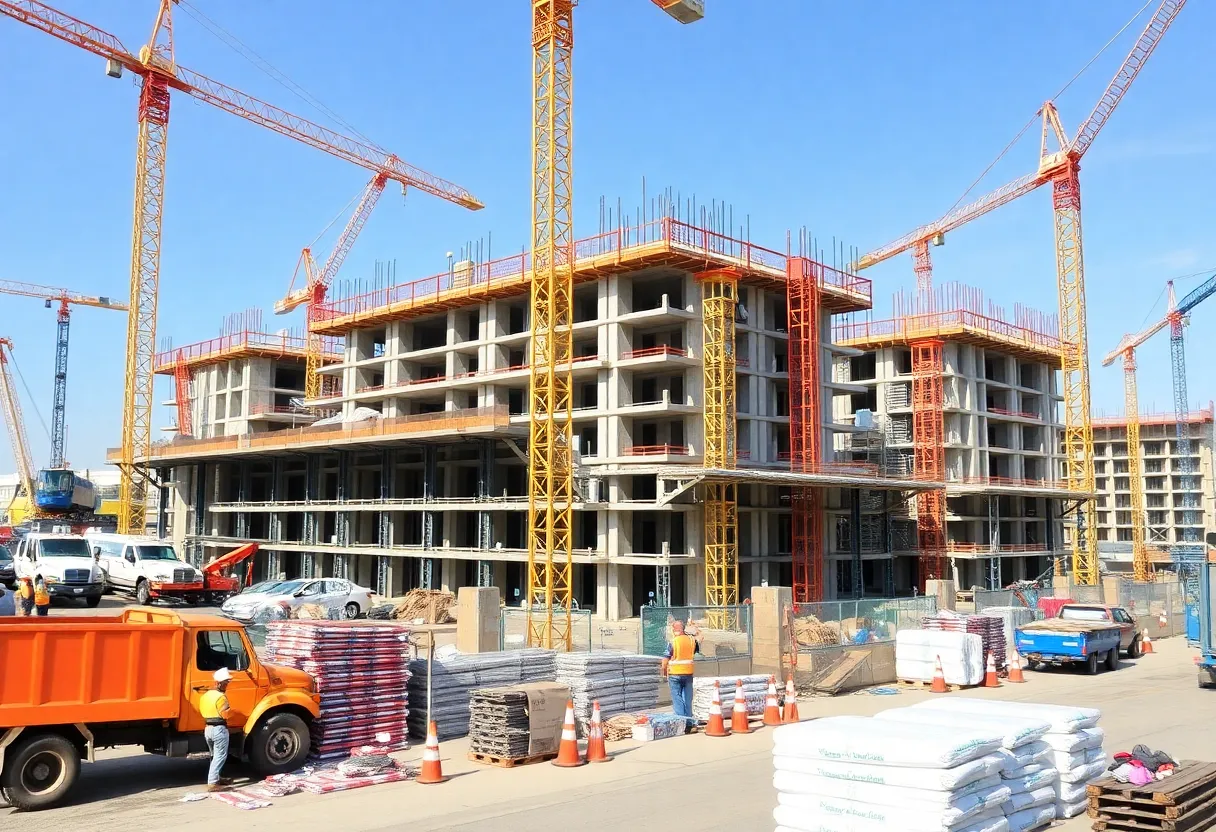News Summary
The Reserve Bank of Australia has reduced its benchmark lending rates by 25 basis points, bringing the cash rate to 3.6%, lowest since April. While inflation declines to 2.1%, the RBA lowers economic growth forecasts from 2.1% to 1.7%. There are mixed market reactions following the announcement, with potential further rate cuts expected in the future. Homeowners may benefit from reduced mortgage payments, but concerns about productivity growth persist.
Reserve Bank of Australia Makes a Bold Move with Cash Rate Cut to 3.6%
The Reserve Bank of Australia (RBA) has just dropped some big news that could affect many Australians! On Tuesday, the RBA slashed its benchmark lending rates by 25 basis points, bringing the new cash rate down to 3.6%. This is the lowest mark we’ve seen since April 2023.
Economic Growth Forecasts Get a Reality Check
But it’s not all good news. The RBA has downgraded its annual economic growth forecast for our great nation. After initially predicting a growth rate of 2.1%, they’ve now revised it down to just 1.7%. The primary culprit? A weaker-than-expected rise in public demand in early 2025. If you were hoping for the economy to bounce back, the RBA is suggesting that conditions are unlikely to improve much for the rest of this year.
Inflation Shows Signs of Relief
On a brighter note, there is a sign of relief as inflation in Australia has dropped to 2.1% in the second quarter, the lowest figure since March 2021. We can all breathe a little easier knowing that inflation is significantly down from its peak in 2022, perhaps giving some hope to consumers and businesses alike.
Market Reactions: A Mixed Bag
Following the RBA’s decision, Australia’s S&P/ASX 200 equity index increased by about 0.3%, showing some positivity in the market. However, the Australian dollar didn’t get the memo, trading lower by 0.15% at 0.6501 against the U.S. dollar after the announcement. Seems like the dollar is feeling under the weather a bit!
Challenges in the Trade Environment
The RBA also mentioned that recent trade dynamics have changed, thanks in part to a baseline 10% tariff imposed by the U.S. on Australia. While this has reshaped our trade environment, the risk of a “very damaging” trade war now appears to have diminished. So, we can count that as a silver lining!
Growth Figures That Raise Eyebrows
Looking back at the first quarter of the year, Australia’s economy grew by 1.3% year on year, which is below the estimated growth of 1.5%. Not to mention, the quarter-on-quarter growth was only 0.2%, falling short of expectations that were set at a 0.4% increase. Katherine Keenan from the ABS pointed to declining public spending and weakened consumer demand and exports as factors contributing to this slowdown.
Future Projections and Rate Cuts Ahead
As for what’s next, analysts at the Commonwealth Bank anticipate another rate cut might be on the horizon around November, and potentially another in early 2026. The expectations are that rates will dip even lower to around 2.85% by mid-2026 based on the newly adjusted inflation forecast. A trend worth noting!
Impact on Homeowners
For homeowners, this rate cut could be a breathing space. Major banks including Westpac and the Commonwealth Bank have indicated that they plan to pass this rate cut onto consumers. This means homeowners with a $500,000 mortgage might see their monthly payments decrease by approximately $74. Not bad, right?
Looking Ahead: A Call for Productivity
The RBA is confident that unemployment won’t rise, and inflation should stay stable. However, there are some serious concerns about productivity growth, which has been cut from 1% to 0.7%. A significant $30 billion downgrade to economic growth is expected over the next two years, leading to the belief that real incomes for Australians are likely to grow slower than hoped.
Final Thoughts
As Jim Chalmers, the Treasurer, sheds light on the economic landscape, it’s clear that resilience in the face of international uncertainties is sorely needed. The RBA seems to have taken a proactive approach, but they’ve emphasized that improving productivity is ultimately a responsibility for the government.
So, as interest rates fall, we can expect a potential pick up in housing market activity—something to keep an eye on! Let’s hope for brighter days ahead as we navigate these challenging economic waters together.
Deeper Dive: News & Info About This Topic
- The Guardian: RBA Interest Rates Decision
- Wikipedia: Interest Rate
- AFR: Jim Chalmers Addresses Media
- Google Search: RBA interest rate cut
- The Guardian: Australia News Live
- Google Scholar: RBA interest rate impact
- AFR: RBA Issues Shock Warning
- Encyclopedia Britannica: Macroeconomics
- CNBC: RBA Policy Decision and Inflation
- Google News: Australia economy

Author: STAFF HERE LOS ANGELES WRITER
LOS ANGELES STAFF WRITER The LOS ANGELES STAFF WRITER represents the experienced team at HERELosAngeles.com, your go-to source for actionable local news and information in Los Angeles, Los Angeles County, and beyond, specializing in "news you can use" with coverage of product reviews for personal and business needs, local business directories, politics, real estate trends, neighborhood insights, and state news affecting the area—with deep expertise from years of dedicated reporting and strong community input, including local press releases and business updates, while delivering top reporting on high-value events like the Academy Awards, LA Auto Show, and Los Angeles Marathon, extending coverage to key organizations such as the Los Angeles Area Chamber of Commerce and the Los Angeles Tourism & Convention Board, plus leading businesses in entertainment and technology like Warner Bros. and SpaceX, and as part of the broader HERE network including HEREAnaheim.com , HERECostaMesa.com , HEREHuntingtonBeach.com , and HERESantaAna.com , providing comprehensive, credible insights into Southern California's dynamic landscape. HERE Anaheim HERE Beverly Hills HERE Coronado HERE Costa Mesa HERE Hollywood HERE Huntington Beach HERE Long Beach HERE Los Angeles HERE Mission Viejo HERE San Diego HERE Santa Ana





